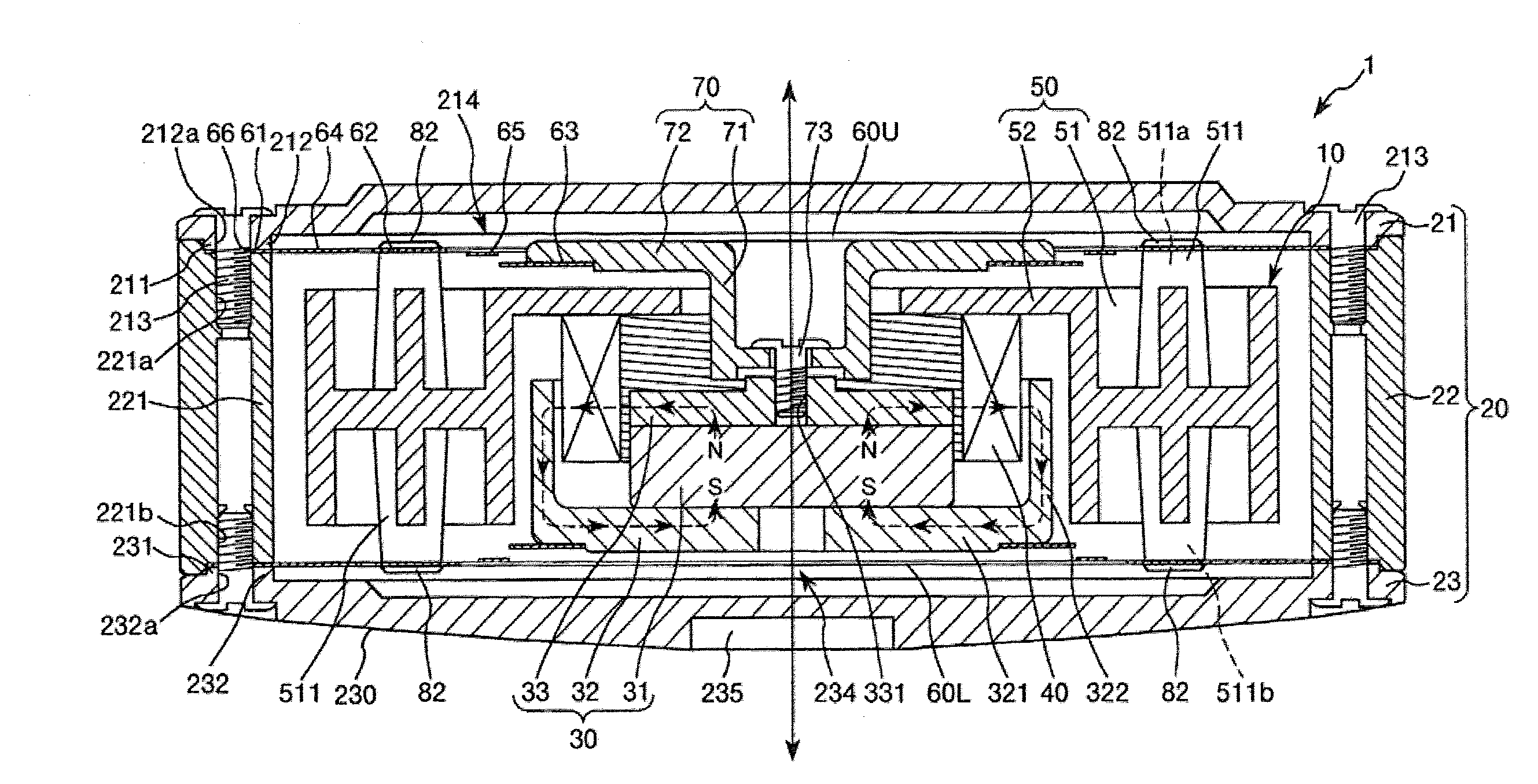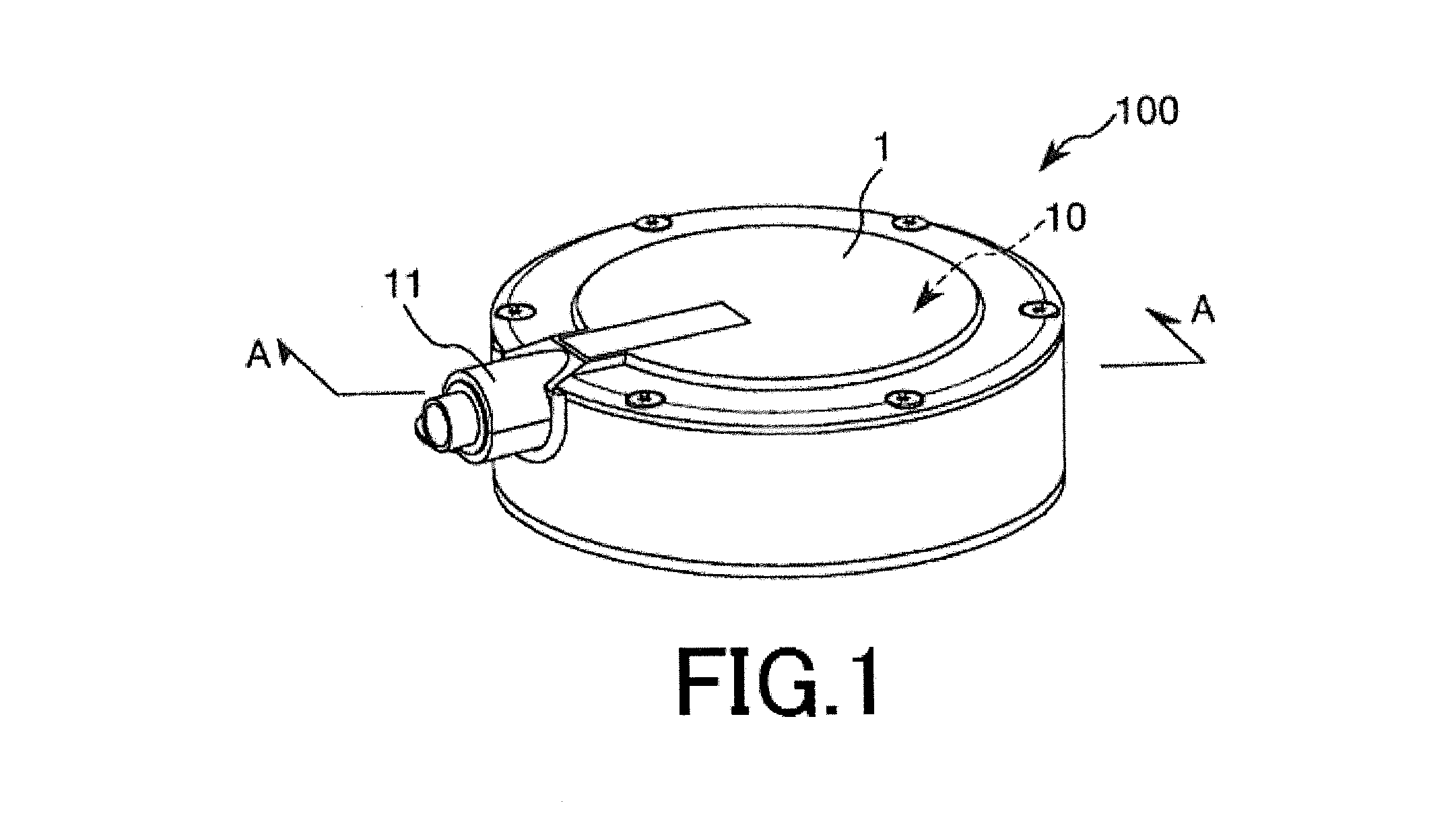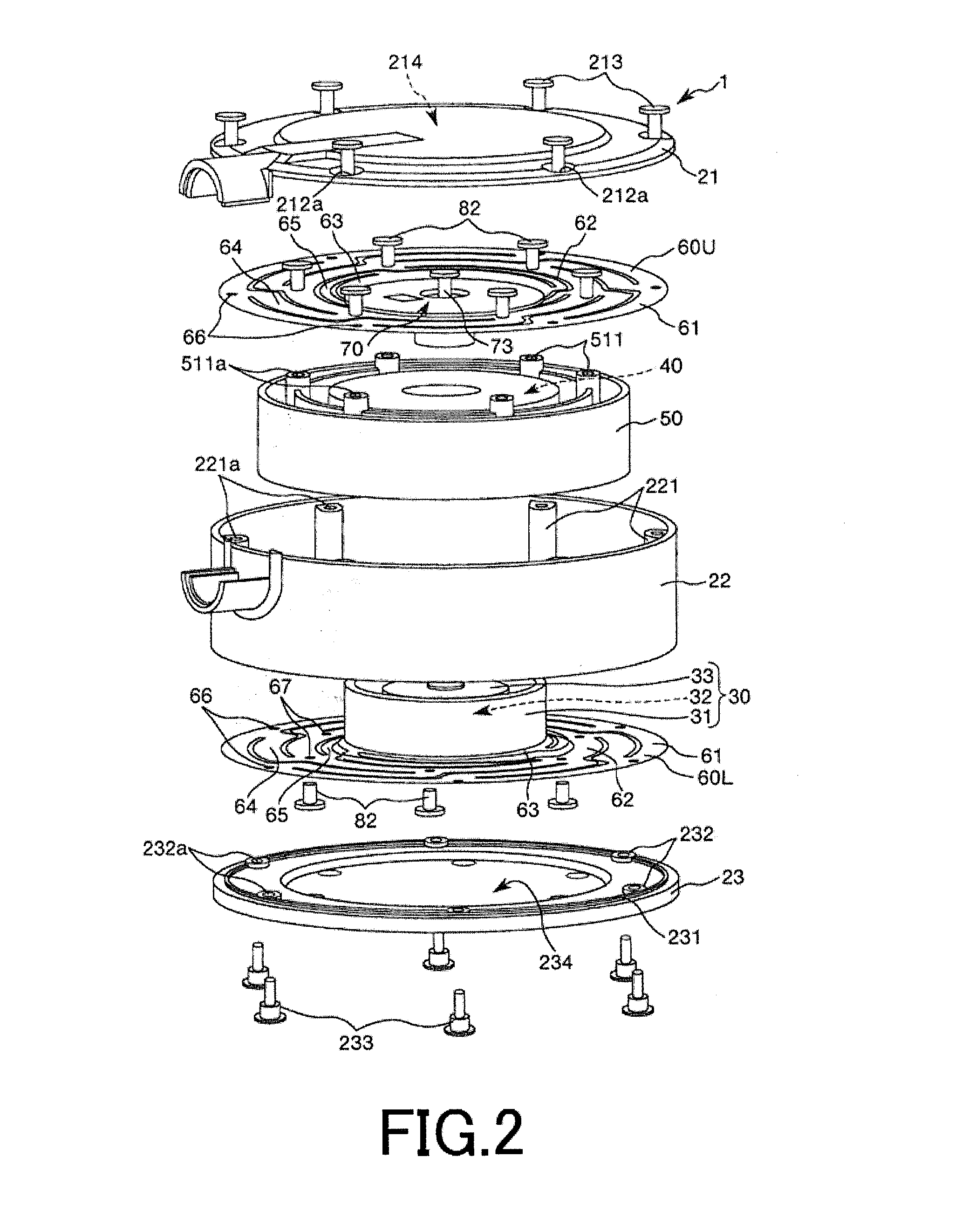Power generator
- Summary
- Abstract
- Description
- Claims
- Application Information
AI Technical Summary
Benefits of technology
Problems solved by technology
Method used
Image
Examples
first embodiment
[0041]Description will be first given to a power generator 100 according to the first embodiment of the present invention.
[0042]FIG. 1 is a perspective view showing the power generator 100 according to the first embodiment of the present invention. FIG. 2 is an exploded perspective view showing the power generator 100 shown in FIG. 1. FIG. 3 is a cross-sectional view taken along an A-A line in FIG. 1 (a longitudinal cross-sectional view showing a main unit shown in FIG. 2). FIG. 4 is a planar view showing a leaf spring of the main unit shown in FIG. 2. FIG. 5 is a graph for explaining an effect due to change of a resonant frequency. Each of FIGS. 6 to 8 is a perspective view showing a structure of a first spring constant adjuster. FIG. 9 is a stress distribution map showing a stress distribution of a first spring portion of the leaf spring shown in FIG. 4 (FIG. 9a is an overall view and FIG. 9b is an enlarged view showing the vicinity of one end portion of the first spring portion)....
second embodiment
[0133]Next, description will be given to a power generator 100 according to the second embodiment.
[0134]Each of FIGS. 14 to 16 is a perspective view showing a first spring constant adjuster 12 according to the second embodiment of the present invention. FIG. 17 is a planar view for explaining an action of the first spring constant adjuster 12 according to the second embodiment of the present invention. Hereinafter, an upper side in FIG. 14 is referred to as “upper” or “upper side” and a lower side in FIG. 14 is referred to as “lower” or “lower side”. Further, an upper side in FIG. 15 is referred to as “lower” or “lower side” and a lower side in FIG. 15 is referred to as “upper” or “upper side”. Furthermore, a front side of the paper in each of FIGS. 16 and 17 is referred to as “upper” or “upper side” and a rear side of the paper in each of FIGS. 16 and 17 is referred to as “lower” or “lower side”.
[0135]Hereinafter, the power generator 100 according to the second embodiment will be d...
third embodiment
[0142]Next, description will be given to a power generator 100 according to the third embodiment.
[0143]FIG. 18 is a perspective view showing a structure of the second spring constant adjuster 13. FIG. 19 is a longitudinal cross-sectional view showing a structure of the second spring constant adjuster 13. FIG. 20 is a longitudinal cross-sectional view for explaining an action of the second spring constant adjuster 13. FIG. 21 is a graph for explaining change of the spring constants of the second spring portions 65. Hereinafter, an upper side in each of FIGS. 18 to 20 is referred to as “upper” or “upper side” and a lower side in each of FIGS. 18 to 20 is referred to as “lower” or “lower side”.
[0144]Hereinafter, the power generator 100 according to the third embodiment will be described by placing emphasis on the points differing from the power generators 100 according to the first and the second embodiments, with the same matters omitted from description. The power generator 100 accor...
PUM
 Login to View More
Login to View More Abstract
Description
Claims
Application Information
 Login to View More
Login to View More - R&D
- Intellectual Property
- Life Sciences
- Materials
- Tech Scout
- Unparalleled Data Quality
- Higher Quality Content
- 60% Fewer Hallucinations
Browse by: Latest US Patents, China's latest patents, Technical Efficacy Thesaurus, Application Domain, Technology Topic, Popular Technical Reports.
© 2025 PatSnap. All rights reserved.Legal|Privacy policy|Modern Slavery Act Transparency Statement|Sitemap|About US| Contact US: help@patsnap.com



